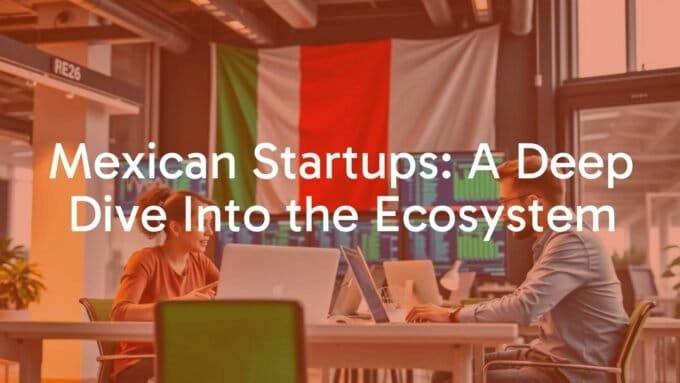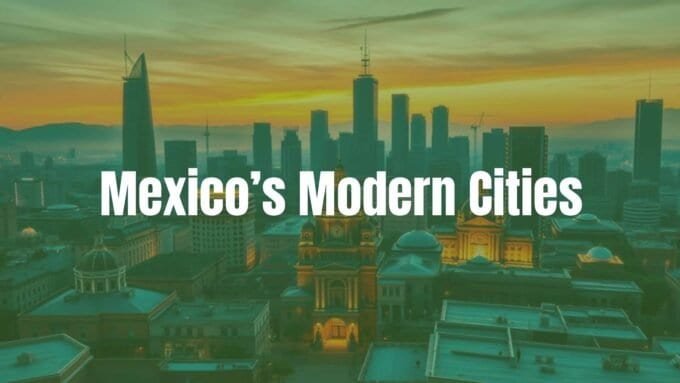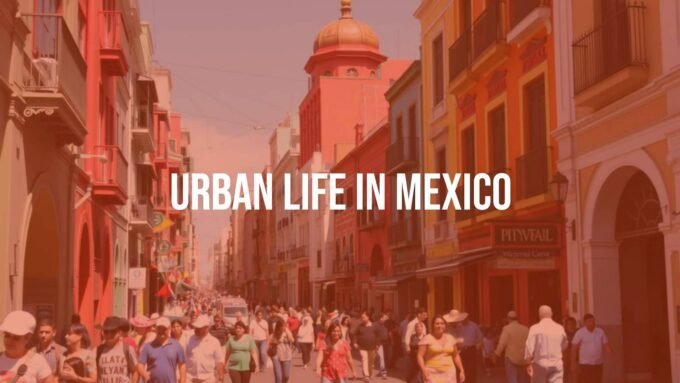Mexico’s economy is on the rise, although its progress shows some ups and downs in today’s changing global environment. As of September 3, 2025, Mexico ranks among the world’s fifteen largest economies and is the second biggest in Latin America. Its growth is shaped by strong industries, wise trade strategies, and constant changes inside the country itself. While Mexico has struggled with steady long-term growth and problems like inequality, recent signs show that the economy is tough and moving forward, even if growth sometimes slows or gains speed.

Mexico’s Economic Picture: Recent Trends and Main Indicators
What’s pushing Mexico’s growth right now?
Mexico’s economy is growing for several reasons, including good financial management, open trade with other countries, and a wide mix of industries-especially manufacturing that connects with companies around the world. Its location, natural resources, and a population close to 130 million all help drive economic activity. In the last ten years, the Mexican economy has grown by about 2.1% a year, showing that it can handle tough international situations. Careful national policies support this growth by keeping the local market strong.
Between January and June 2025, Mexico’s economy increased by 0.9% compared to the same period in 2024. While this is slower than past years, it still shows continued growth. In the second quarter of 2025, the economy grew by 0.6% over the previous quarter, following a 0.3% increase in the first quarter, according to Mexico’s National Institute of Statistics and Geography (INEGI). This progress continues despite issues like the United States adding tariffs to certain goods from Mexico, proving that Mexico’s economy continues to adapt and grow.
Main Economic Indicators
- Gross Domestic Product (GDP): $1,269 billion
- GDP per person: $9,946
- Foreign Direct Investment (first half 2025): $34.3 billion (up 10% from last year)
- Main sector for foreign investment: Manufacturing
- Inflation Rate: 3.49% in August 2025 (down from 3.51% in July)
- Central Bank Interest Rate: 7.75% (recently lowered by 0.25%)
- Peso exchange rate: 18.65 pesos per U.S. dollar (peso up 12% in 2025)

The Role of Remittances
Money sent home by Mexicans working mainly in the United States-known as remittances-is a key help for many families, making up about 3.5% to 4% of Mexico’s GDP. When the peso is weaker, these families get more pesos for each dollar sent home, giving them higher buying power.
However, in the year leading up to September 2024, remittances made up only 2.8% of Mexico’s GDP, showing slower growth compared to 8.9% in 2023. This slowdown may be linked to changes in U.S. immigration policy or economic shifts, and sudden changes like mass deportations in the U.S. could reduce this important flow of money.
Differences Across Regions and Sectors
Even as the country grows, not all regions and industries benefit the same way. Mexico’s official poverty rate dropped from 43.2% in 2016 to 36.3% in 2022, mainly thanks to better jobs and higher minimum wages.
| Sector | Share of GDP | Q2 2025 Growth (quarterly/annual) | Jan-Jun 2025 vs. 2024 |
|---|---|---|---|
| Primary (farming, fishing, forestry) | 4% | -2.4% / 2.6% | +4.6% |
| Secondary (manufacturing, construction, mining, utilities) | 34% | +0.7% / -0.3% | -0.8% |
| Tertiary (services) | 60%+ | +0.8% / 1.8% | — |
The farming sector recently shrank, showing -2.4% growth in Q2 but was up year-over-year. Manufacturing, while important, had mixed results with some slowdown, and services consistently led Mexico’s GDP growth.
Main Sectors Pushing Mexico’s Economic Growth
Manufacturing: Cars, Electronics, and Space Technology
Manufacturing is a major part of Mexico’s economy-making products from cars to electronics and aerospace parts that are bought around the world. Policies and deals such as the USMCA (previously NAFTA) draw in foreign investment and link Mexico closely to United States and Canadian supply chains.

- Manufacturing makes up around 90% of Mexico’s exports
- It contributes 20% to the country’s GDP
Although manufacturing dipped slightly earlier in 2025, its role is still central, and the sector changes with global trends and new technology.
Agriculture: Major Crops and Export Destinations
Agriculture is a smaller piece of the economy (about 4% of GDP), but it is essential for rural jobs and food supply. Mexico’s climate allows it to grow many crops. Key exports include:

- Fruits: avocados, berries, mangoes
- Vegetables: tomatoes, peppers
Most are shipped to the United States. Agriculture faces risks such as drought, but recent data shows the sector can recover and still grows yearly despite challenges.
Mining and Energy: Oil, Gas, Renewables
Mining and energy are important for Mexico, primarily from oil and gas, run by companies like Pemex. But these sectors face problems. Oil production is down, hitting about 1.6 million barrels per day in January 2025, near historic lows.
- Pemex is shifting to focus more on national energy needs than profit
- Pemex debt stands at roughly $100 billion (about 5.5% of GDP)
Investments in renewables are growing, but the energy sector requires changes for long-term improvement.
Services: Finance, Tourism, Retail
Services account for over 60% of Mexico’s GDP. This category includes financial services, tourism, and shops of all kinds, providing most national jobs. The sector keeps growing steadily, with tourism boosted by Mexico’s culture and attractions. Finance offers critical support for both businesses and everyday people. The country is also working, with help from groups like the World Bank, to make financial services available to more people, especially women, young adults, and small businesses.

Trade and Foreign Investment: Building Global Relationships
Exports and Key Partners
- Exports depend mostly on manufactured goods (90%)
- The United States is Mexico’s top trading partner-trade between the two reached $746 billion
- Other major partners: Spain, the Netherlands, Germany, United Kingdom, Japan
This range of partners shows Mexico’s strong place in the world economy and its active trade policy.
Free Trade Agreements and USMCA
Mexico is open to trade and has deals with 50 countries. The most important is the United States-Mexico-Canada Agreement (USMCA), covering over $24 trillion in economy and almost a third of world GDP. Mexico also benefits from agreements with the European Union, the Pacific Alliance, and CPTPP, further increasing its access to global markets.
| Trade Agreement | % of World GDP Covered | GDP Value Covered (Billions) |
|---|---|---|
| USMCA | 28% | $24,440 |
| Pacific Alliance FTA | 41% of Latin America & Caribbean | $2,707 |
| EU-Mexico FTA | 22.9% | $19,974 |
| CPTPP | 12.9% | $11,262 |
An upcoming review of USMCA in 2026 could create new risks, as future U.S. trade policy changes may affect Mexico’s exports and investments.
Foreign Investment Patterns
Investment from other countries is a key part of Mexico’s growth story. In the first half of 2025, foreign direct investment (FDI) climbed to almost $34.3 billion. Most of this goes to manufacturing, but areas like infrastructure, energy (especially renewables), and technology are attracting more interest, too. The government is trying to draw even more private investment to keep the economy moving ahead.
Challenges and Risks for Future Growth
Inequality and Poverty
Even with solid economic progress, many challenges remain. While poverty rates have fallen, with 5.4 million fewer people under the poverty line since 2016, the gap between rich and poor is still wide, and not all regions or groups benefit equally. Programs like “Oportunidades,” supported by the World Bank, are trying to reach families in need, especially those in rural or poor areas and groups like women or young entrepreneurs.
Rules, Corruption, and Business Conditions
Mexico offers many business chances but faces problems with complicated regulations and corruption. These issues make business less certain and can scare away potential investors. International rankings often report weak rule of law in Mexico, with high rates of unresolved crimes.
A controversial change to how judges are chosen-allowing popular votes instead of professional selection-has raised worries in business circles. This and other changes can make it riskier or less predictable for companies, especially in sectors like energy and construction.
Currency Swings and Inflation
The peso has risen about 12% against the dollar in 2025, but big changes like this can have mixed effects-helping consumers by making imports cheaper, but making exports less competitive. Inflation sits at 3.49% (August 2025), dropping slowly. While the central bank has cut interest rates to boost the economy, high service costs and wages keep pressure on inflation. Global shocks or supply issues, especially in energy, could make inflation rise again in the future.
Changes in Justice and Energy Sectors
Recent reforms in the justice and energy fields are changing the economic climate. The new process of electing judges by popular vote aims to fight impunity but creates uncertainty for businesses with legal disputes. In the energy field, Pemex, Mexico’s giant oil company, is now focused more on guaranteeing Mexico’s own energy, not necessarily profit. With its heavy debts and policy changes, there are new risks, especially if it needs more support from the national budget. These shifts affect confidence for investors and could create difficulties for Mexico’s public finances if not managed carefully.
Opportunities Ahead: How Mexico Can Keep Moving Forward
Sectors with the Best Growth Outlook
- Manufacturing: Cars, electronics, aerospace will likely remain strong
- Services: Finance, digital business, and tourism have lots of room to expand
- Renewable Energy: Solar, wind, and other clean technologies are growing fast
- Retail, Housing, Infrastructure: Supported by a growing middle class and urban areas
Helping small businesses and making financial services available to more people can boost local economies and spark more innovation.
How Nearshoring Helps Mexico
The trend of nearshoring-companies moving factories closer to major markets-offers a big chance for Mexico. With major U.S. markets nearby, good transport, and many trade agreements, Mexico is an ideal place for companies to set up factories and jobs. Many businesses are moving operations from Asia to Mexico to make supply chains shorter and less risky, which is expected to drive even more economic growth.

Policies for Ongoing Progress
- Create clear and stable rules to attract and keep investment, especially in areas like infrastructure
- Maintain responsible government spending to avoid high public debt
- Plan for possible changes in trade, especially with the U.S., and strengthen ties with other partners
- Continue investing in social programs, education, and healthcare to address poverty and inequality
- Encourage financial services and support for small businesses to spread benefits broadly
By adopting these steps and making sure the economy is both strong and fair, Mexico can keep moving forward and offer growth for all its people.














Leave a comment